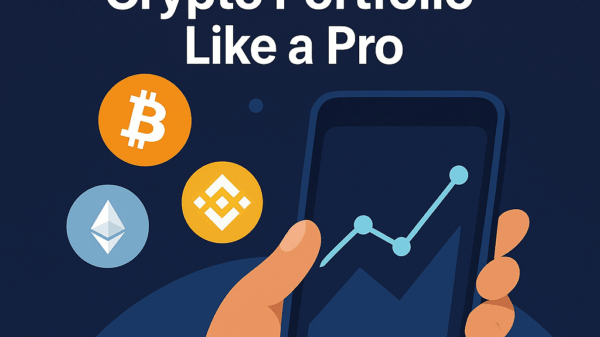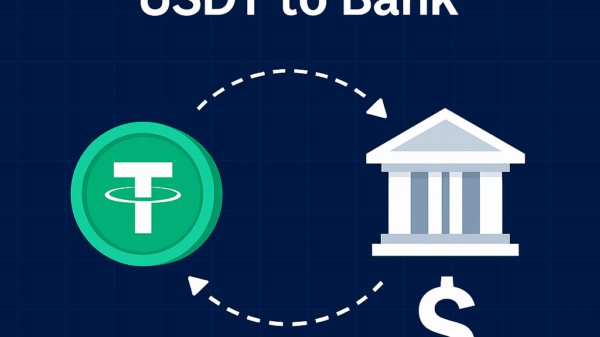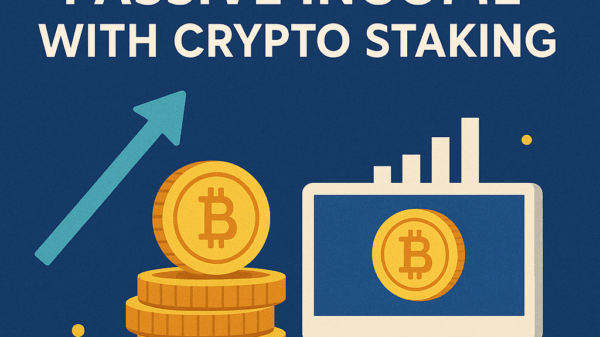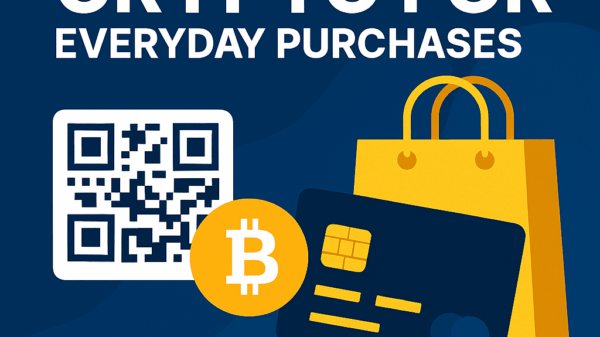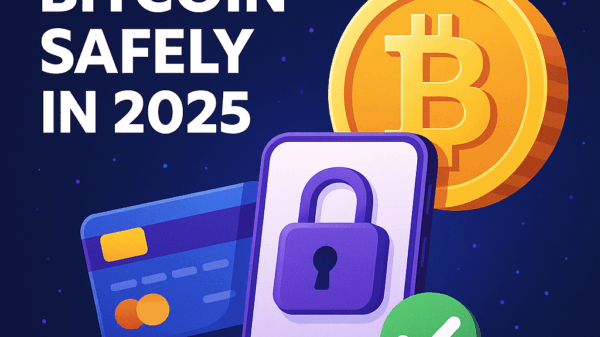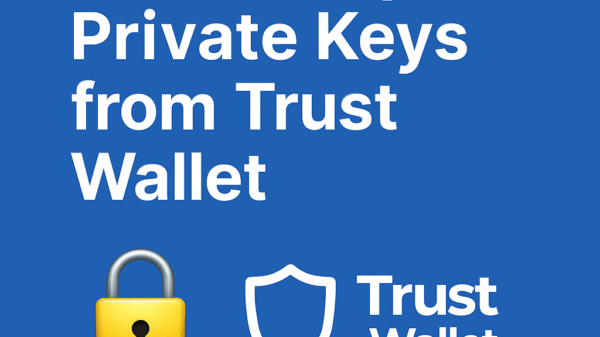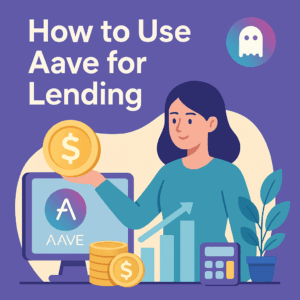How to Bridge Tokens Between Chains
By Jason Miller – Crypto Writer 10.expert 🧠 Covering Bitcoin, altcoins, blockchain & Web3.
As a crypto writer and analyst, one of the most exciting, yet often confusing, developments in the blockchain space has been the proliferation of Layer 1 (L1) and Layer 2 (L2) networks. While Bitcoin and Ethereum established the foundational chains, the demand for scalability, lower fees, and specialized functionalities has led to a rich ecosystem of blockchains like Polygon, Arbitrum, Optimism, Solana, Avalanche, Base, and many more.
However, these blockchains often operate in isolation, like independent islands. This is where blockchain bridges come in. Bridges are crucial infrastructure that allow users to transfer assets and sometimes even data between different, otherwise incompatible, blockchain networks. They are the highways of the multi-chain future, unlocking liquidity and enabling users to access diverse dApps across different ecosystems.
In 2025, bridging has become an everyday activity for many DeFi users, but it’s not without its complexities and risks, as evidenced by numerous high-profile bridge hacks in recent years. Understanding how they work and how to use them safely is paramount.
Let’s explore how to bridge tokens between chains.
Bridging tokens is a fundamental skill for anyone interacting with multiple blockchain networks. Here’s your guide to understanding and executing cross-chain transfers.
Understand What a Blockchain Bridge Is 💡
- Connecting Separate Networks: Blockchains are typically isolated. A bridge is a protocol or set of smart contracts that enables assets and information to flow between two distinct blockchains that cannot natively communicate.
- Lock & Mint / Burn & Release: The most common mechanism involves “locking” the original token on the source chain and “minting” a wrapped or representative version of that token on the destination chain. When bridging back, the wrapped token is “burned” on the destination chain, and the original token is “unlocked” on the source chain.
Identify Your Source and Destination Chains 🗺️
- From Which Chain? (e.g., Ethereum Mainnet, Arbitrum, Polygon, BNB Smart Chain, Solana)
- To Which Chain? (e.g., Base, Optimism, Avalanche, another Layer 2)
- This dictates which specific bridge or bridging method you’ll need.
Choose a Reputable Bridge or Bridge Aggregator ✅
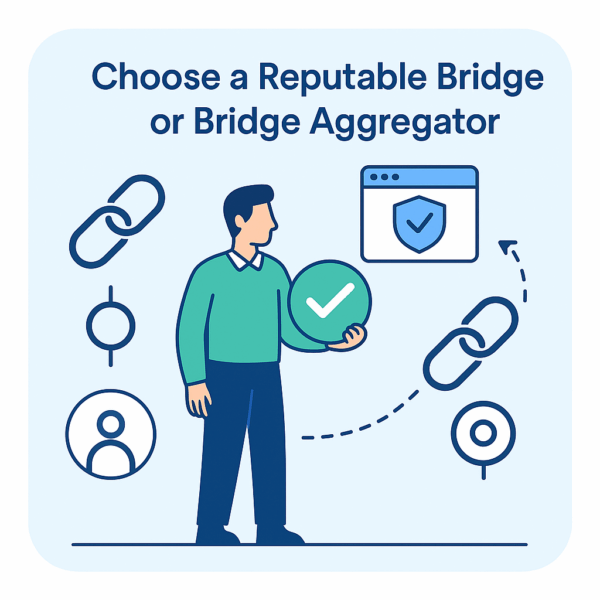
- Official Bridges: Many networks have official, native bridges (e.g., Polygon Bridge for ETH to Polygon, Arbitrum Bridge for ETH to Arbitrum). These are often considered safer for their specific use case.
- Third-Party Bridges/Aggregators: Platforms like Synapse Protocol, Portal Bridge, Celer cBridge, Symbiosis Finance, and Orbiter.finance allow bridging across a wider range of networks and tokens. MetaMask itself now integrates a bridging aggregator, providing quotes from various bridges.
- Research is Key: Always verify the bridge’s reputation, audit history, and security track record. Major bridge hacks are a recurring theme in crypto.
Connect Your Web3 Wallet to the Bridge DApp 🦊
- MetaMask (or compatible wallet): Ensure your wallet (e.g., MetaMask) is connected to the bridge dApp.
- Correct Network: Make sure your wallet is set to the source network from which you want to bridge funds.
Select the Token and Amount to Bridge 🪙
- Choose Token: Select the specific token you wish to bridge (e.g., ETH, USDC, USDT, a specific altcoin).
- Enter Amount: Input the quantity of the token you want to send.
- Review Fees & Estimated Receive Amount: The bridge will display estimated fees (gas fees on both chains, bridge fees) and the amount of token you expect to receive on the destination chain. Factor in potential price impact for very large or illiquid transfers.
Ensure You Have Native Gas Tokens on Both Chains ⛽
- Source Chain Gas: You’ll need the native token of the source chain (e.g., ETH for Ethereum, BNB for BSC, MATIC for Polygon) to pay for the initial transaction to send your tokens to the bridge.
- Destination Chain Gas (Crucial!): You’ll also need a small amount of the native token on the destination chain to pay for gas fees when you claim your bridged tokens or interact with dApps on that new chain. Many bridges will offer a small gas token drip or allow you to bridge a small amount of the native token itself, but sometimes you need to acquire it separately.
Approve Token Spending (If Bridging an ERC-20/BEP-20 etc.) ✅
- Initial Approval: If you’re bridging an ERC-20 token (or BEP-20, etc.) that isn’t the native gas token, you’ll likely need to give the bridge smart contract permission to spend that token from your wallet. This is a separate, small gas-fee transaction.
- Confirm in Wallet: Your wallet (e.g., MetaMask) will prompt you to approve this transaction.
Initiate the Bridge Transaction 🚀
- Confirm Transfer: Once you’ve reviewed all details and approved the token (if necessary), confirm the transfer on the bridge dApp.
- Confirm in Wallet: Your wallet will prompt you for the final transaction, which involves sending your tokens to the bridge’s smart contract on the source chain. This incurs the main gas fee.
Wait for Confirmation and Bridging Process ⏳
- Varying Times: Bridging times can range from a few seconds (especially on fast L2s) to several minutes or even hours/days (for optimistic rollups with a “challenge period,” like bridging from Optimism/Arbitrum back to Ethereum mainnet, which can take 7 days).
- Track Transaction: Use the provided transaction hash (Tx ID) to track the progress on both the source and destination block explorers. Most bridge UIs also show the transaction status.
Claim Tokens on the Destination Chain (If Required) 📥
- Automatic vs. Manual: Some bridges automatically send the wrapped tokens to your wallet on the destination chain once the process is complete. Others require you to return to the bridge dApp, switch your wallet to the destination network, and “claim” the tokens manually (which incurs a final gas fee on the destination chain).
Add the Wrapped Token to MetaMask (If Not Visible) ➕
- If the newly bridged token doesn’t appear in your wallet, you’ll need to manually “Add Token” using its contract address on the destination network. This is a common step for non-native tokens.
Understand Bridge Risks: The Trust Factor ⚠️
- Smart Contract Vulnerabilities: Bridges are complex smart contracts, and bugs can lead to massive losses (e.g., Ronin Bridge, Harmony Bridge, Multichain). Audits help but don’t eliminate all risk.
- Centralization Risk: Some bridges rely on centralized relayers or multisig wallets. If these entities are compromised, funds can be stolen. “Trusted” (custodial) bridges require you to trust a third party, while “Trustless” (non-custodial) bridges rely on cryptographic proofs and smart contracts.
- Wrapped Token De-pegging: If the underlying locked asset on the source chain is compromised or its value is impaired, the wrapped token on the destination chain can lose its peg, becoming worthless.
- Liquidity Risk: Some bridges may have insufficient liquidity for large transfers, leading to delays or higher fees.
Consider Bridge Aggregators for Best Rates and Routes 📊
- Aggregators like MetaMask’s built-in bridge feature or services like Li.Finance and Socket Protocol will scan multiple bridges to find the most efficient (fastest, cheapest) route for your specific token and chain pair.
Be Wary of Phishing Scams 🎣
- Always double-check the URL of the bridge you are using. Scammers create fake bridge websites to steal funds. Bookmark official links.
Use Official Bridge Documentation 📚
- For complex or less common bridges, consult the official documentation provided by the blockchain project or bridge operator. This will often detail specific steps, typical transaction times, and potential caveats.
Bridging is an indispensable tool in the decentralized ecosystem, empowering users to move seamlessly between different blockchains. While convenient, it’s a sophisticated operation with inherent risks. By performing diligent research, confirming all transaction details, and understanding the underlying mechanisms, you can bridge your tokens securely and confidently.

